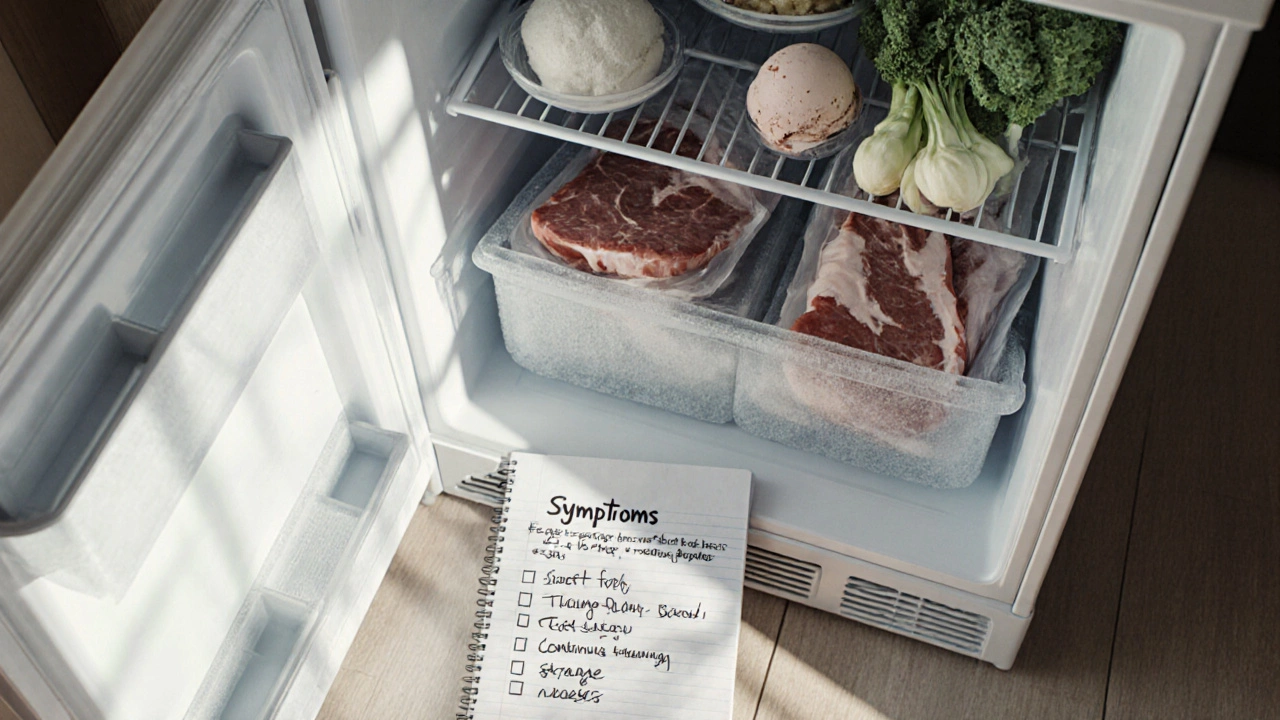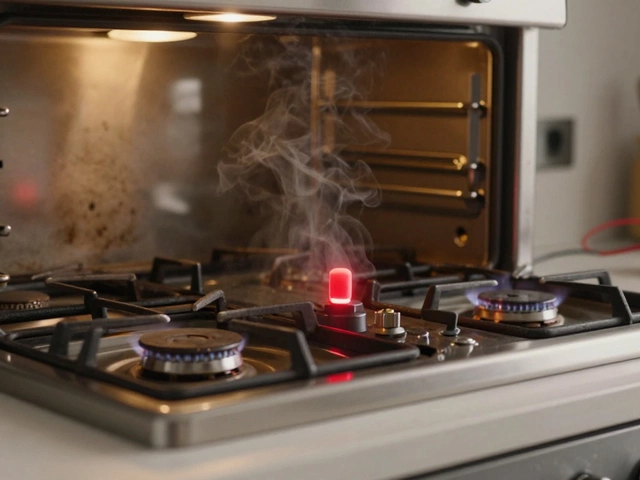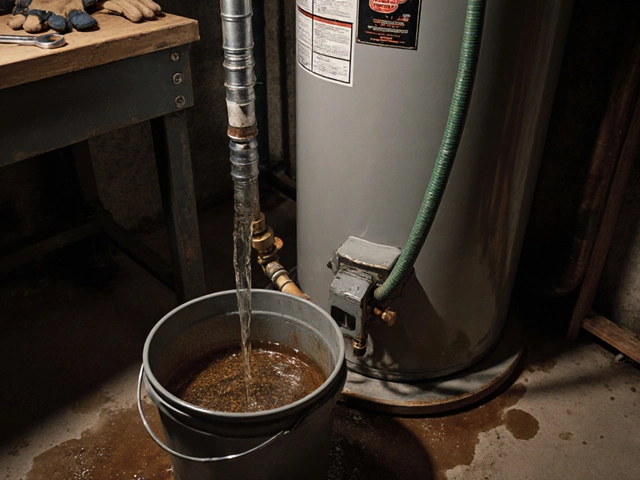Freezer Diagnosis Tool
Select symptoms you're experiencing to identify possible causes and fixes for your freezer.
Symptoms
Freezer is a compartment in a refrigerator that keeps food at temperatures below 0 °C (32 °F) to preserve freshness. When a freezer stops staying frozen, it can ruin meals and waste money on energy bills. Below are the most common reasons a freezer won’t stay frozen, how to diagnose the problem, and step‑by‑step fixes you can try before calling a pro.
Identify the Symptoms First
- Food is soft or partially thawed.
- Frost buildup on the interior walls.
- Freezer runs continuously but never reaches the set temperature.
- Unusual noises from the back of the unit.
Write down what you see and hear - it will help you match the symptom to the likely cause.
Check the Power Supply
It sounds basic, but a loose plug or tripped breaker is a top culprit. Verify that the freezer is firmly plugged into a functioning outlet. Use a voltage tester or plug another appliance into the same outlet to confirm it’s delivering 120 V (or 240 V for Canadian models).
While you’re at it, make sure the outlet isn’t shared with high‑draw devices that could cause voltage drops.
Inspect the Door Gasket
Door gasket (the rubber seal around the freezer door) must be airtight. A cracked, warped, or dirty gasket lets warm air in, forcing the unit to work harder.
- Close the door on a piece of paper. If you can pull the paper out easily, the seal is compromised.
- Clean the gasket with warm, soapy water and a soft cloth. Remove any food debris or mold.
- If the gasket is damaged, replace it - most home‑improvement stores stock universal kits for major brands.
Assess the Condenser Coils
Condenser coils sit on the back or underneath the freezer. Dust and pet hair act like insulation, preventing heat from escaping.
- Unplug the freezer.
- Use a vacuum with a brush attachment or a coil cleaning brush to remove buildup.
- Wipe the coils with a damp cloth and let them dry before plugging the unit back in.
Cleaning the coils alone can improve cooling by up to 30 %.
Test the Evaporator Fan
Evaporator fan circulates cold air from the freezer compartment into the fridge. If it fails, the freezer may still be cold, but the fridge will warm up, and you’ll hear a humming motor.
- Listen for a faint whirring sound when the freezer door is closed.
- If you don’t hear it, the fan motor may be burnt out or obstructed.
- Remove the back panel inside the freezer (usually a few screws) and check for ice blockage.
- Spin the fan manually; it should rotate freely. Replace the fan if it’s stiff or silent.
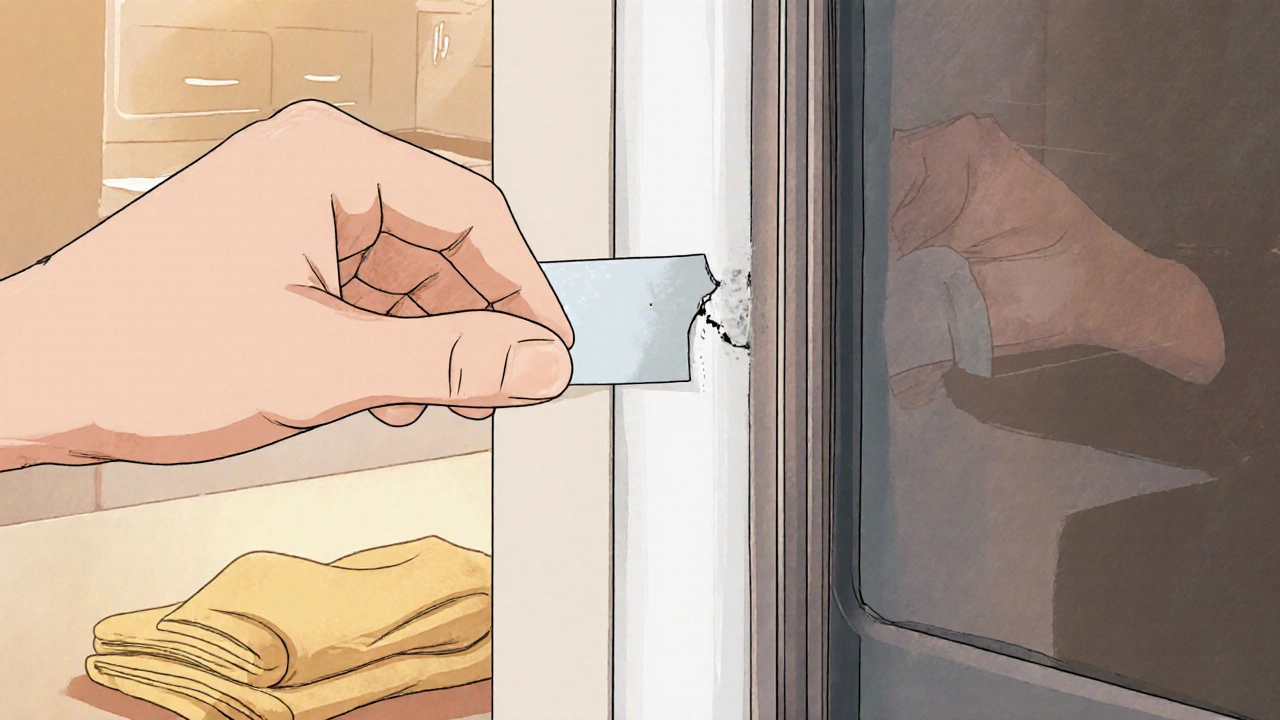
Examine the Thermostat and Temperature Sensor
Thermostat (or electronic temperature sensor) tells the compressor when to turn on. A faulty thermostat may cause the compressor to stop cycling.
- Locate the thermostat - often a dial behind the interior panel.
- Set it to the coldest setting and wait 30 minutes. If the freezer still doesn’t freeze, the thermostat could be dead.
- For digital models, use a multimeter to check resistance. Values outside the manufacturer’s range indicate replacement.
Look at the Defrost System
The Defrost timer and heater melt any frost that builds on the evaporator coils. If the timer or heater fails, ice can accumulate and block airflow.
- Manually advance the defrost timer (usually a small dial) by a few hours. If the freezer starts cooling again, the timer is suspect.
- Inspect the defrost heater with a multimeter for continuity.
- Replace the timer or heater as needed - many models share a combined unit.
Check the Compressor and Refrigerant Levels
Compressor is the heart of the cooling cycle. It compresses refrigerant gas, raising its temperature so it can release heat at the condenser coils.
If the compressor is humming but the freezer stays warm, you may have a low‑refrigerant leak - a job for a certified technician.
- Feel the compressor’s surface; it should be warm, not icy.
- Listen for a steady, low‑pitch hum. A clicking sound may mean the overload protector is tripping.
- Never attempt to recharge refrigerant yourself; handling refrigerants requires EPA certification.
Environmental Factors
Freezers placed in hot garages, near ovens, or in direct sunlight can struggle to maintain temperature. Aim for an ambient room temperature between 10 °C and 32 °C (50 °F‑90 °F).
If your freezer is in a cold basement (below 10 °C), the thermostat may think it’s already cold and skip cooling cycles. In that case, adjust the thermostat upward or relocate the unit.
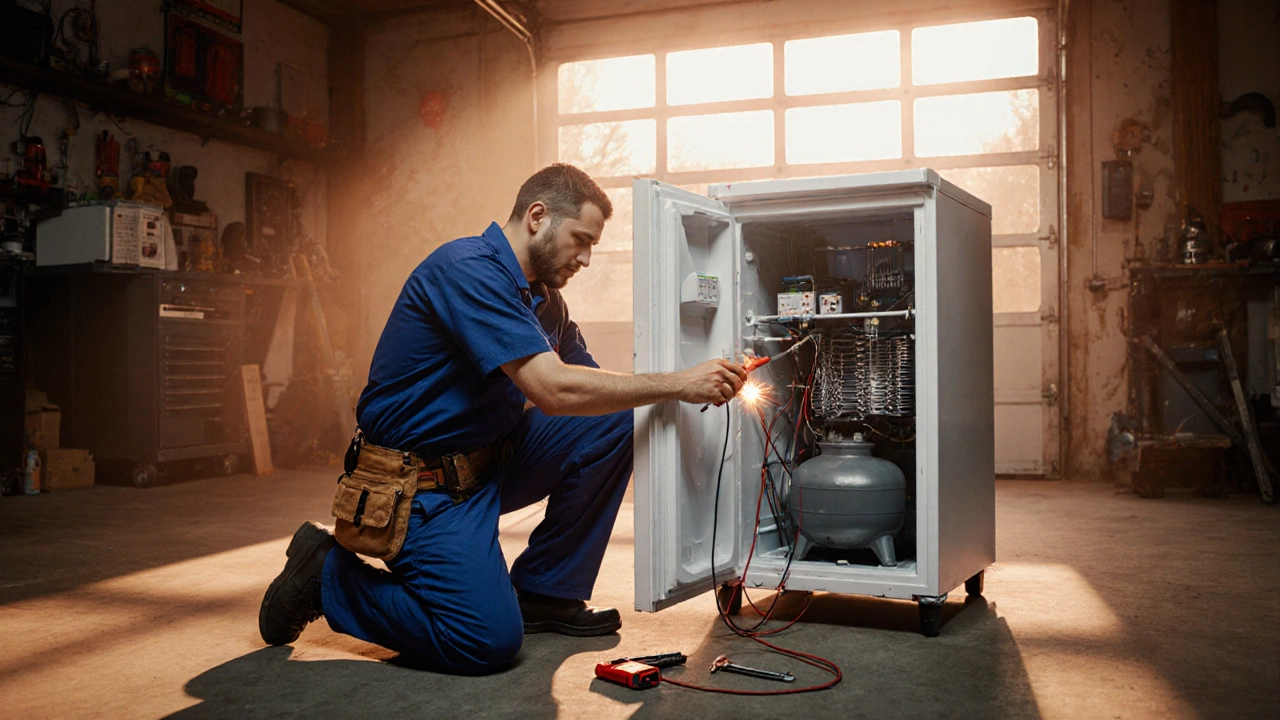
When to Call a Professional
If you’ve walked through the steps above and the freezer still won’t stay frozen, it’s time to call a qualified appliance repair service. Common issues that need a pro include:
- Compressor failure or motor replacement.
- Refrigerant leaks or recharging.
- Electronic control board malfunction.
- Complex defrost system repairs.
Document the symptoms and any troubleshooting you performed - it saves the technician’s time and can reduce labor costs.
Preventive Maintenance Checklist
| Task | Frequency | Why It Matters |
|---|---|---|
| Inspect door gasket for cracks | Monthly | Maintains airtight seal |
| Vacuum condenser coils | Monthly | Improves heat rejection |
| Check interior temperature (set to -18 °C/0 °F) | Monthly | Ensures proper cooling |
| Listen for fan and compressor sounds | Weekly | Detects early motor issues |
| Clear any ice buildup | As needed | Prevents airflow obstruction |
Following this simple schedule can keep your freezer running efficiently and avoid costly repairs.
Quick Fix Summary
- Verify power and breaker.
- Seal the door gasket.
- Clean condenser coils.
- Unblock or replace the evaporator fan.
- Test thermostat and temperature sensor.
- Advance the defrost timer.
- Inspect compressor and consider professional help for refrigerant issues.
If you’ve tried these steps and your freezer still won’t stay frozen, a certified repair technician will have the tools to diagnose compressor or refrigerant problems safely.
Frequently Asked Questions
Why does my freezer run continuously but never gets cold?
A constantly running compressor usually points to a faulty thermostat, a blocked evaporator fan, or a refrigerant leak. Check the thermostat first, then ensure the fan spins freely, and finally call a professional if those components are fine.
Can I replace the door gasket myself?
Yes. Most gaskets attach with screws or clips. Remove the old seal, clean the mounting surface, and press the new gasket into place. Ensure a tight fit to avoid air leaks.
Is it normal for a freezer to make a humming noise?
A low‑frequency hum from the compressor is normal. However, rattling, clicking, or high‑pitched squeals indicate mechanical problems that should be inspected.
How often should I clean the condenser coils?
At least once a year, preferably before summer when the unit works hardest. If you have pets or a dusty garage, clean them every 3-4 months.
My freezer is in a cold basement. Should I adjust the thermostat?
Yes. Raise the thermostat setting by 2-3 °C (3-5 °F) to compensate for the low ambient temperature. This prevents the unit from thinking it’s already cold and shutting off.
If you’re still stuck, remember that the strongest tool in troubleshooting is patience. Working methodically through each component often reveals a simple fix before you need a costly service call.
